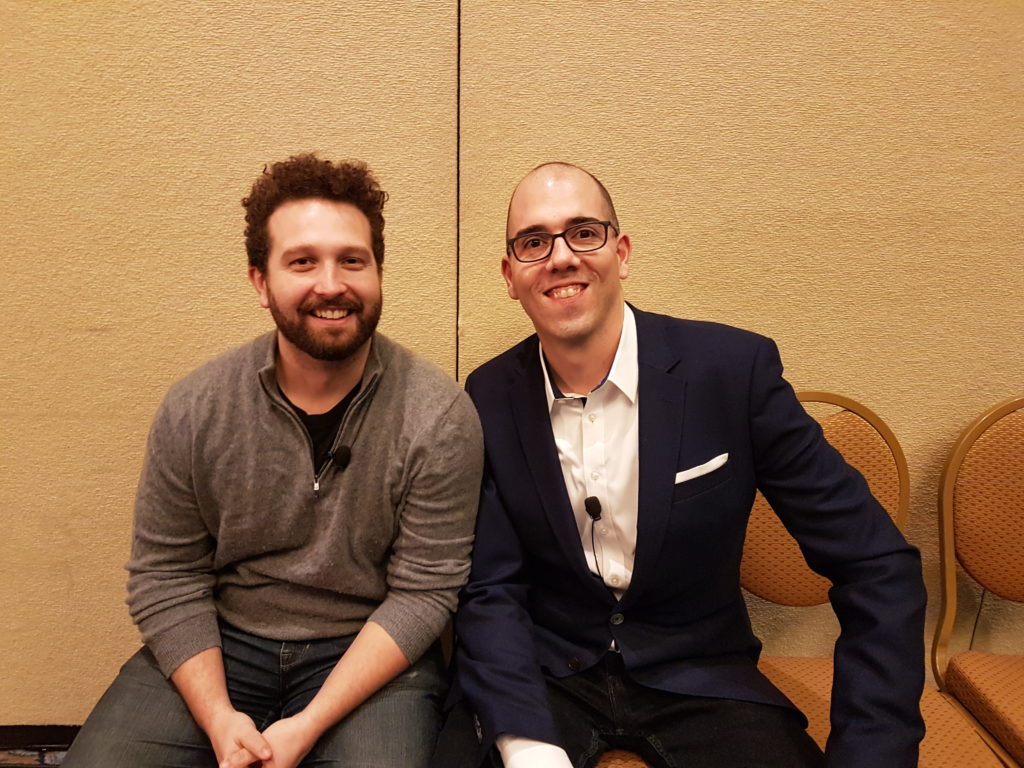The new reporting and data sharing capabilities of PointClickCare‘s LTPAC EHR platform were a big hit with the 2,000 users gathered on Day 1 of the company’s annual #PCCSummit18 being held in Nashville TN.
In the opening session, Co-Founder and COO of PointClickCare, Dave Wessinger, bravely walked through the company’s new report engine in a live demo. He started by showing off the new searching capability that will allow users to quickly find the report they need by simply typing a keyword into the search bar. Any report with a matching word in its description appears in the results. This one feature replaces dozens of weekly calls to systems administrators who have to help end-users find the right report to run because the current system has limited ability to organize and find reports. There was an audible “Yes” and collective fist pump from many in the audience.
Wessinger then went on to demonstrate the new data visualization tools and data export capabilities in the report engine.
“The export capabilities alone are a game changer for me,” said Timothy Carey, Director of Data and Performance Analytics at BaneCare. “Right now it’s not that easy to export data from a report into Excel where it can be further analyzed or combined with other data sources. The new export capabilities will cut out many hours from our work week.”
Skilled Nursing Facilities (or SNFs) like BaneCare have to produce detailed reports on the patients (residents) that are transferred to them from their acute care partners. These reports are required by the case managers at the acute care organizations – who need them to ensure their patients are getting the post-acute care their physicians prescribed.
“Having the right data and providing it quickly to our acute care partners is what differentiates us from competing facilities,” continued Carey. “The goal is to be the preferred LTPAC partner to acute care organizations and being able to provide timely data is a key criteria of being a good partner. Having good data also helps our own organization determine where to invest additional resources.”
BJ Boyle, VP of Product Management at PointClickCare followed Wessinger on the main stage where he proceeded to give a live demonstration of the company’s new data sharing module called Harmony. Harmony was first announced at HIMSS18 and was something Boyle and I spoke about in this interview.
One of the main components of Harmony is a customizable dashboard that allows case managers at acute care organizations to see how their referred patients are faring at the SNF. Through Harmony, the case mangers and SNF staff can see the same patient data in real-time. This allows for unprecedented collaboration between the organizations.
“Right now we spend a lot of time making phone calls, sending emails and in meetings with our acute care partner,” said Cyndi Howell, Lead RNAC and PCC Clinical Liaison at Willow Valley Communities. “This is needed to keep each organization informed of what’s happening with patients that we are both responsible for. We do it because we are both committed to providing the best care possible. We love working collaboratively with our partners at Lancaster General Hospital (part of Penn Medicine). It’s just what we have to do to take care of people in our community.”
When Willow Valley Communities implements Harmony, they will no longer have to manually pull data from their PointClickCare system in order to facilitate the discussions with Lancaster. Instead, staff from both organizations will simply log onto Harmony and view the same data together in real-time.
“We are very excited and happy about Harmony,” explained Howell. “It’s going to make all our lives so much easier and patients will end up benefitting from better and more coordinated care.”
The real-time dashboard isn’t the only feature of Harmony. The module also featured a robust data integration engine, powered by Redox, that will allow PointClickCare to quickly connect it’s cloud-base system to EHRs at acute care organizations.
“PointClickCare wanted to get off the integration treadmill,” said Boyle. “It simply wasn’t scalable to connect to each hospital system one by one. We are happy to partner with our friends at Redox and leverage the power of their engine and the network of providers/vendors they work with.”
Through the Redox engine, patients transitioning from an acute care organization to a SNF or other LTPAC facility will have all their data seamlessly sent as part of the discharge process. No more faxes or paper-based binders of medical information.
“Part of our vision is for everyone in healthcare to have a complete view of the patients they are taking care of,” stated Luke Bonney, CEO and Co-Founder of Redox who presented with Boyle in a breakout session later on Day 1 of #PCCSummit18. “That can only happen when every member of the healthcare ecosystem can share data in an easy way and in a format that is meaningful to everyone involved.”


“I am totally bought into the vision,” said Carey. “All of us here at BaneCare want patients to have the best possible experience while in our facilities. That means we need all the relevant information right at the point of transition from the acute care organization – medications, care plans, etc. Harmony will automate this entire step.”
I must admit I did not expect to meet so many people here at #PCCSummit18 who were excited about interoperability. I was also truly surprised that there are so many organizations actively working together on practical interoperability use cases that are true win-win-wins (for acute care organizations, LTPAC facilities and patients).
But then again, when you are in Nashville (aka Music City) you’d expect a little harmony.













